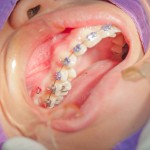
The mini-screw is a temporary anchorage device (TAD) that is used widely in orthodontic treatment and are considered to provide strong anchorage. Two main types are in use the self-drilling and self-tapping mini-screw.
The aim of this review was to compare the success rates of self-drilling and self-tapping mini-screws in orthodontic practice.
Methods
The PubMed, Cochrane Central Register of Controlled Trials (CENTRAL), Embase, China National Knowledge Infrastructure (CNKI), and SIGLE databases were searched without restrictions on language. Randomised controlled trial (RCT), clinical controlled trial (CCT), and cohort study assessing the success/failure rates of self-drilling and self-tapping mini-screws for orthodontic anchorage were considered. Two calibrated reviewers independently selected studies, abstracted data and assessed study quality. The Newcastle-Ottawa scale (NOS) was used to assess methodological quality. Meta-analysis was performed with subgroup analysis of different study designs, different follow-up period, the age of participants, and immediate loading or delayed loading.
Results
- 6 studies (3 Cohort, 3 CCTs) were included.
- The 6 studies were considered to be of high quality scoring between 5-8 on the NOS.
- Meta-analysis (6 studies) results showed no difference in success rates between the two types of screws. Odds ratio (OR) = 0.90 (95%CI; 0.52– 1.53)
- Two studies investigated the root contact of self-drilling and self- tapping mini-screws. Meta-analysis found no difference in the rate of root contact between the 2 systems. OR =0.96 (95% CI; 0.53–1.71).
Conclusions
The authors concluded: –
Currently available clinical evidence suggests that the success rates of self-tapping and self-drilling mini-screws are similar. Determination of the position and direction of placement should be more precise when self-drilling mini-screws are used in sites with narrow root proximity.
Comments
A broad search of a number of databases has been conducted for this review. However, none of the identified studies were randomised controlled trials. So while the study quality was assess as being high the included studies do have a greater potential for bias. Only 3 of the included studies had follow up periods of 6 months with the other 3 reporting after shorter periods, with the shortest being just 1 week. The analysis is also based on the number of mini-screws placed rather than the number of patients, which may have implications for the findings as there is no indication as to whether any of the individual studies have taken into account the impact of clustering on their findings. As the authors indicate well-designed RCTs comparing the two types of mini-screws would be helpful to provide more reliable information.
Links
Primary paper
Yi J, Ge M, Li M, Li C, Li Y, Li X, Zhao Z. Comparison of the success rate between self-drilling and self-tapping miniscrews: a systematic review and meta-analysis. Eur J Orthod. 2016 May 10. pii: cjw036. [Epub ahead of print] Review. PubMed PMID: 27166073.

Mini-screws for orthodontic treatment:self-drilling or self-tapping? https://t.co/pOOEMJjkaR
Success rates of self-tapping and self-drilling miniscrews for orthodontics similar https://t.co/pOOEMJjkaR
Self-drilling or self-tapping mini-screws for orthodontic treatment? https://t.co/pOOEMJjkaR
Orthodontic mini-screws: self-drilling or self-tapping? https://t.co/pOOEMJjkaR
Don’t miss- Mini-screws for orthodontic treatment- self-drilling or self-tapping? https://t.co/pOOEMJjkaR